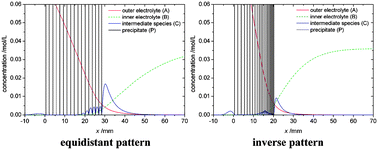Design of equidistant and revert type precipitation patterns in reaction–diffusion systems†
Abstract
In the past years considerable attention has been devoted to designing and controlling patterns at the microscale using bottom-up self-assembling techniques. The


 Please wait while we load your content...
Please wait while we load your content...